Nostalgia-core is the comforting decor trend that harks back to simpler times – here's how to get the sentimental style
Create comforting interiors which conjure happy memories with these nostalgic decorating ideas


Nostalgia-core is a bit of a buzzword at the moment. With our digital world moving ever faster and many of us feeling like we’re constantly connected, it’s no wonder people are looking back to simpler times – whether it's boogying around the kitchen to vinyl records, making patchwork quilts, or getting stuck into 80s films.
But it’s not just pastimes that we’re reminiscing over, many of us are getting nostalgic over our decor, too. Rooted in a desire to rekindle happy childhood memories, nostalgia-core is an interior design trend for introducing design features from times gone by to help create a comforting, grounding and soothing atmosphere.
To learn more about the nostalgia-core trend we asked the experts for their insights and have shared some key ways to channel the sentimental style.
What is nostalgia-core decor?
Nostalgia-core is the decor trend that introduces design features from the past to create comforting and homely environments that spark happy memories. Chintzy florals, 1970s paint colors and retro cane furniture are just a few of the vintage trends making a comeback as we seek to surround ourselves with the familiar and create interiors which are reassuring sanctuaries in a world with so many unknowns.
'At its core, nostalgia is a feeling of coziness. More than just reminiscing over old photographs, nostalgia has become a universal sentiment and trending theme that has infiltrated mainstream culture and design, influencing everything from our fashion and the food we eat to the colors we choose for our homes,’ says Tash Bradley, director of interior design and color Psychologist at Lick.
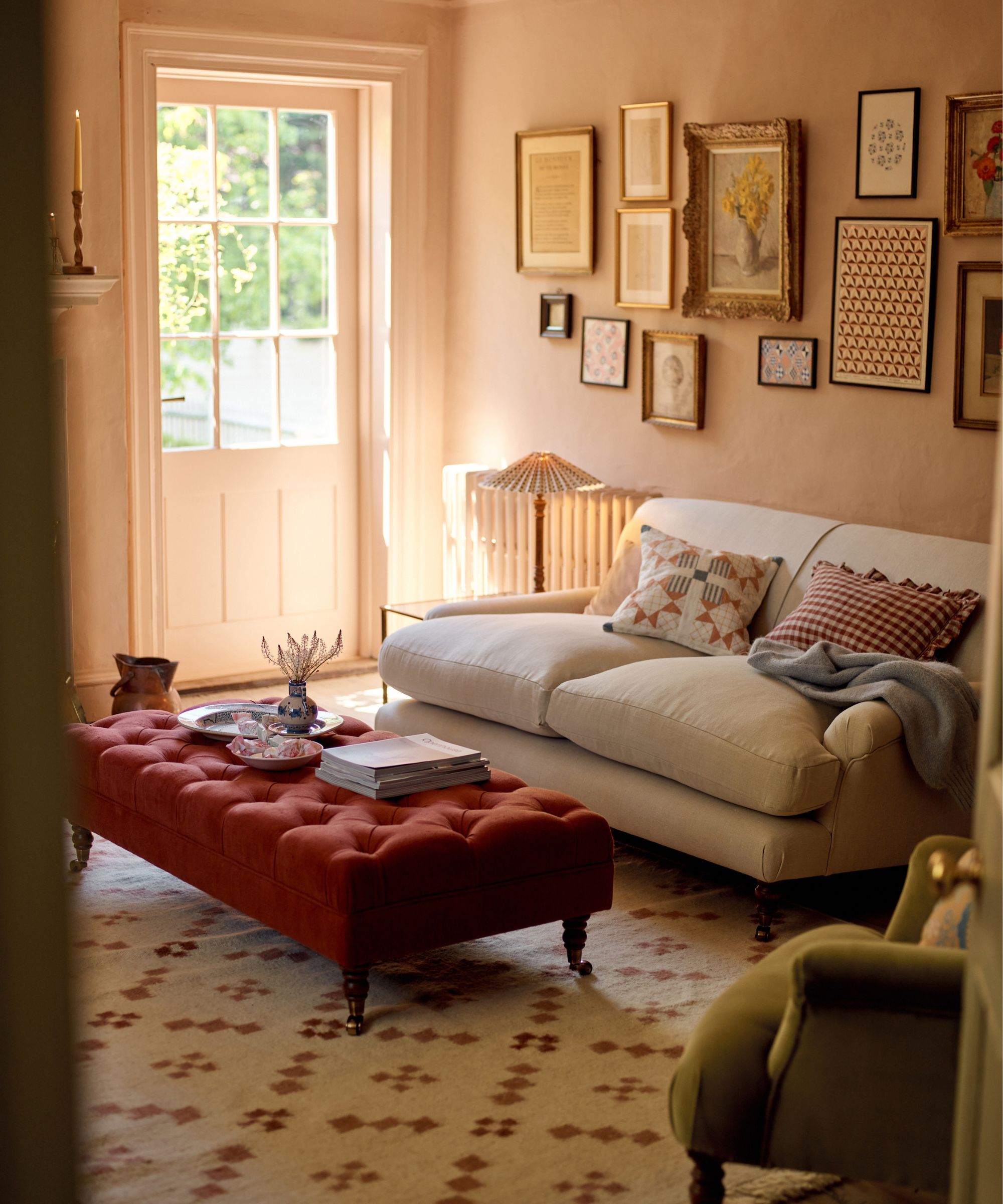
'There’s a quiet charm to nostalgic interiors that feels both familiar and deeply comforting,' adds Lucy Uren, creative director and founder of British online furniture and home store Rowen & Wren. 'A layered, lived-in look where delicate patinas, timeworn textures, and vintage details bring a timeless soulfulness to the home. It’s about more than just decorating; it’s about creating a sanctuary that feels as though it’s always been there, with every item chosen to evoke a gentle, nostalgic embrace.'
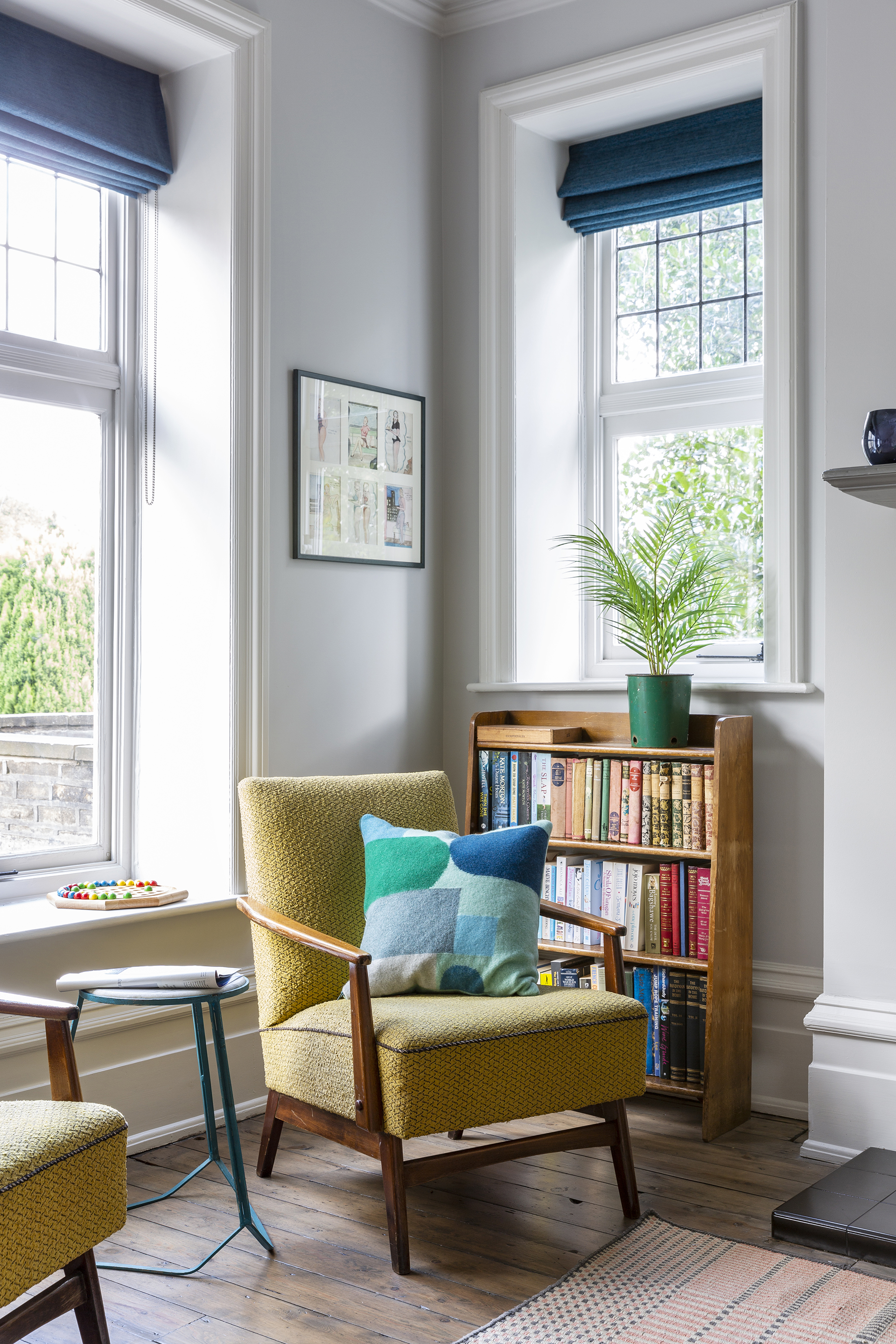
While a certain level of nostalgic kitsch can bring a fun and playful edge to interiors, the key to embracing nostalgia-core is not to recreate the past, but to mix old with new – after all, nobody wants to live in a museum. Introducing pieces such as old family photos or heirlooms, vintage furniture or retro home decor ideas can be a great way to create spaces with soul and comfort, but take care to pair these with modern pieces to prevent things looking dated say the experts.
Design expertise in your inbox – from inspiring decorating ideas and beautiful celebrity homes to practical gardening advice and shopping round-ups.
‘Connecting to the past with personal items that have a story to tell help to provide a sense of history and connection. I could not decorate a house, let alone live in one, without antiques, says Henriette Von Stockhausen, founder of VSP Interiors. ‘Whether choosing one piece in an otherwise modern interior for major impact or a whole house for settled comfort, it’s about blending and mixing periods and styles to make the space come alive.’
From mid-century modern color ideas to more chintzy vintage touches, these nostalgic decorating ideas are guaranteed to inspire if you're a sentimental soul.
1. Bring comfort with vintage paint colors
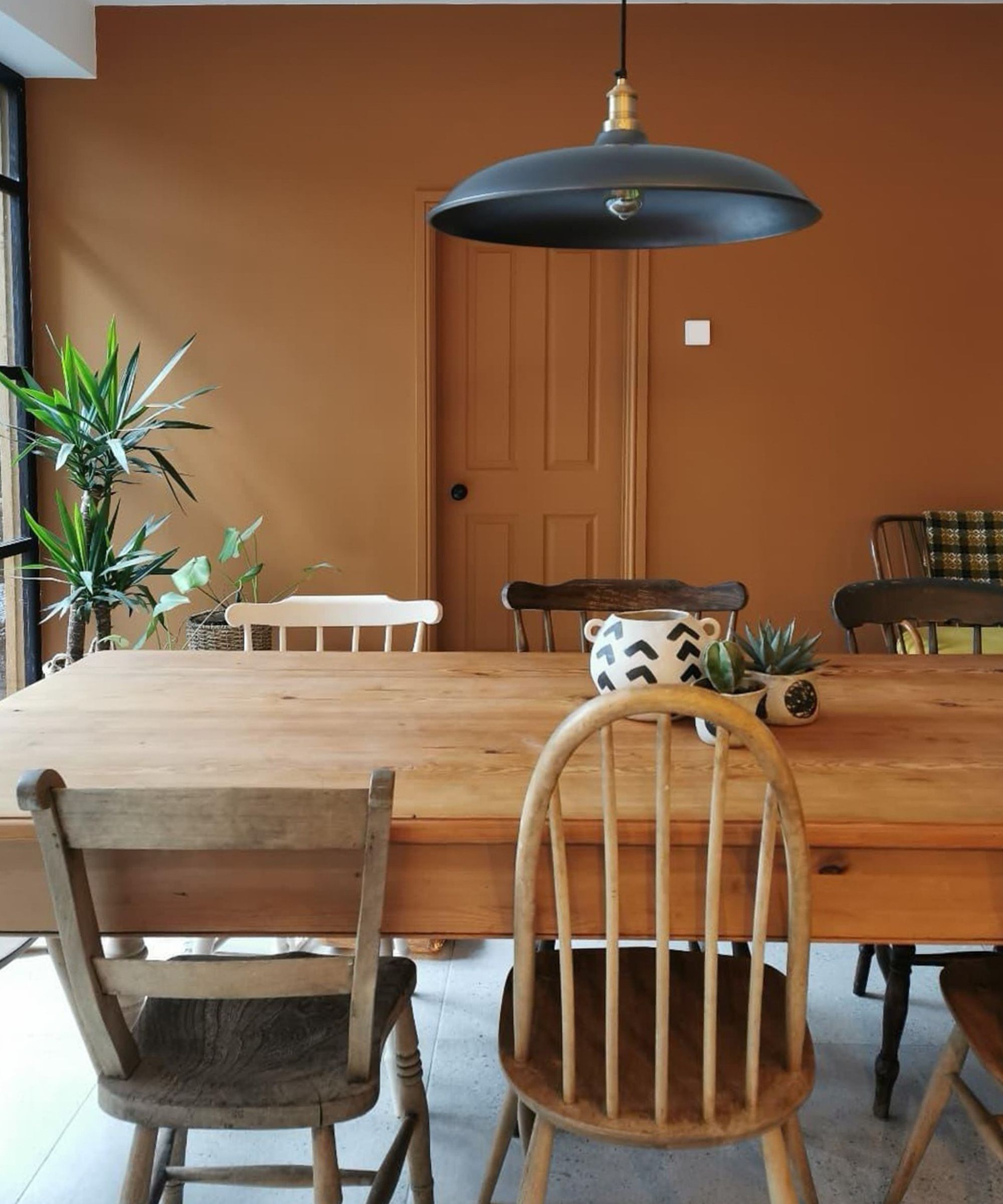
Color can instantly spark memories and emotions. Recently we’ve noticed vintage paint colors making a comeback as people seek to create grounding and comforting spaces. Warm earthy colors such as browns, oranges and pinks are all proving popular, as are cocooning neutrals. At the other end of the spectrum 'dirty’ greens and blues which have a mellow and calming feel are also on the rise. On the other hand, we’ve also noticed more buttery and mustard yellows emerging, and acid greens are making a comeback with people looking to embrace a retro 1970s look.
'The nostalgia trend will be a key factor in choosing paint shades in 2025 and beyond because it encourages decorators to think about the colors that mean something to them, trigger specific memories tied to the past, and make them feel safe,’ says Tash Bradley at Lick.
‘The colours in our 2025 palette encapsulate that feeling of nostalgia because of their depth, warmth and coziness. Our palette evokes that same feeling you get when you are nostalgic about a cherished memory.'

The team at Benjamin Moore have also noticed a revival of retro colors, particularly from the 1970s. If you're brave enough why not embrace a scheme of retro glamour by pairing its Pilgrimage Foliage orange and Salzburg Blue with shimmering metallics?
'Rich tones, sumptuous textures, and a dose of retro glamour inject rooms with a 1970s welcome,' says Helen Shaw, director of marketing at Benjamin Moore. 'Opt for a selection of mustard, terracotta and rust shades, whose warm undertones add instant coziness. An unexpected note of warm-based blue at a scheme’s entry point enhances the effect, while metallic tile finishes add a reflective and textured surface. Add tactile elements such as velvet upholstery to complete the tailored, 1970s Halston-inspired effect.'
2. Decorate with chintzy florals

Chintzy florals have fallen in and out of style over the decades, but if it’s a cozy cottage look you’re after they’re pretty much a decorating staple. Layering romantic florals with simple stripes and ditsy prints is a wonderful way to create an inviting bedroom full of nostalgic charm. The key is to balance blowsy florals with smaller-scale prints to prevent the scheme from becoming overpowering.
‘I think coziness comes from a great sense of nostalgia, which we often achieve through mixing textures. Selecting different fabrics, mixes of linen and cottons, and trim details with wallpapers used as a backdrop to pictures all adds to the aesthetic and feeling. Layer up with fabric lampshades for lower lights, bed cushions and rugs, blankets and floor-length lined curtains (very important they’re lined) with a billowing generous feel,’ says Rebecca Craig, lead designer at Sanderson.
‘That feeling of coziness comes from selecting fabrics and prints and layering them for a really detailed scheme. Florals mixed with small-scale prints and even a bold stripe can work in harmony and create a feeling of warmth and comfort, that I think we all seek in a bedroom space.’
3. Add vintage-style wallpapers
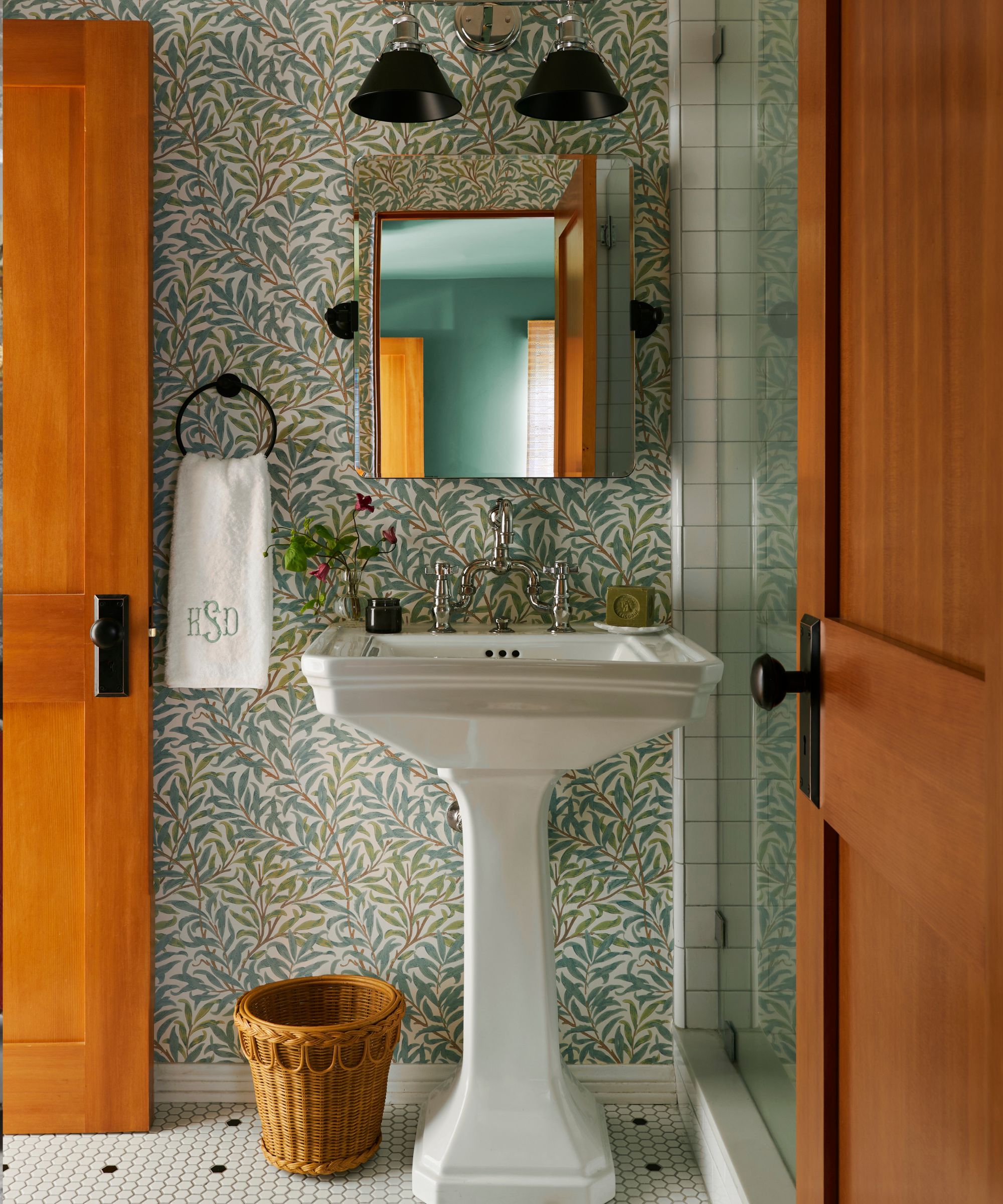
Pasadena-based interior designer Hayley English, has also noted a shift towards nostalgic decorating and a desire to create comforting lived-in spaces. 'Now more than ever, our clients crave designs with a sense of familiarity and comfort,' she says. 'We achieve nostalgia-core by sourcing textiles and wallcoverings inspired by historic patterns and colors. Complementing these elements with warm finishes and patinas is our preferred formula for timeless yet approachable spaces.'
Here, Hayley English has used Morris & Co.'s classic Willow Boughs wallpaper, a classic Arts & Crafts design, to bring a touch of heritage style to a small powder room.
4. Embrace frills and fabric skirts
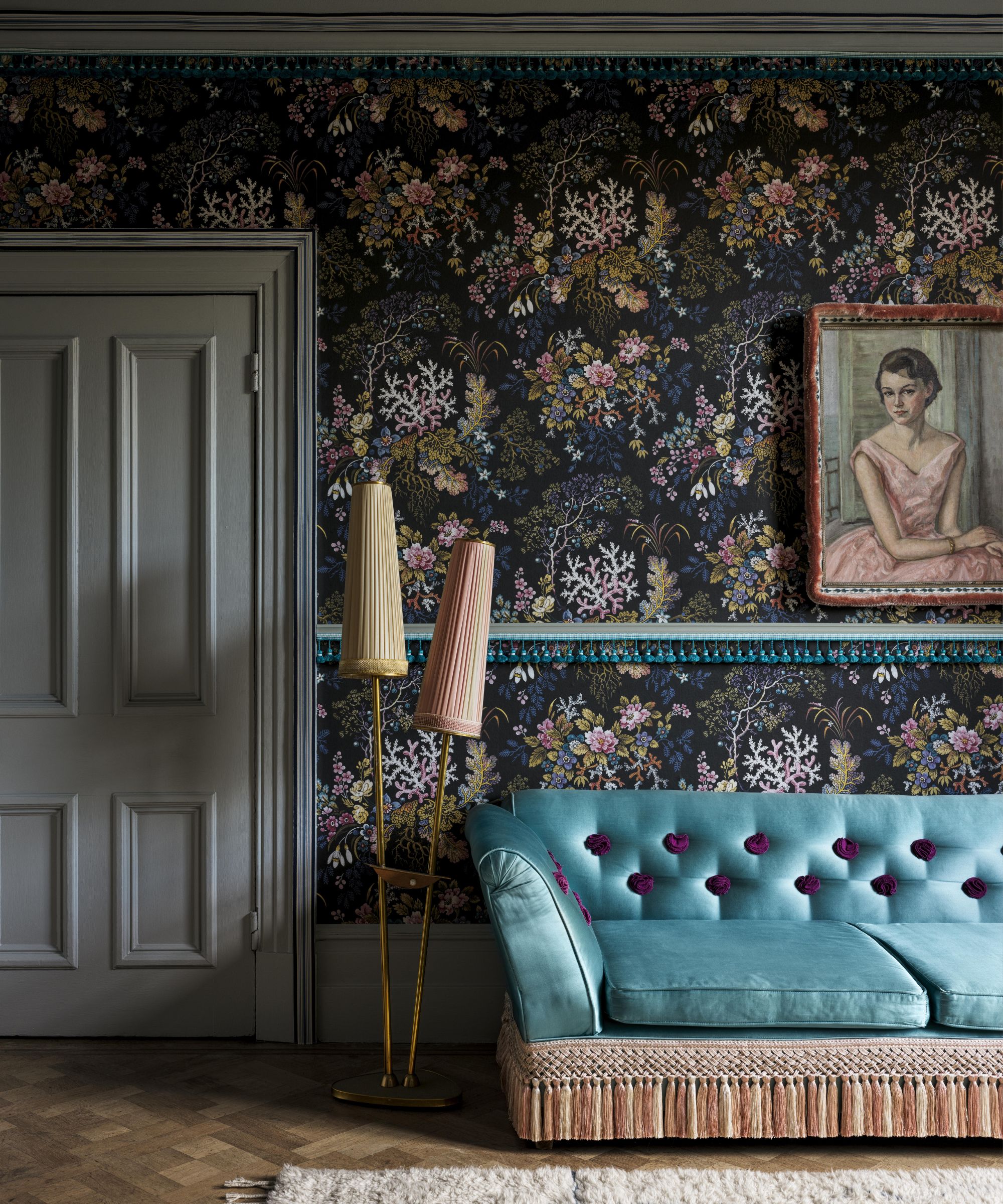
Having fallen out of fashion over the last couple of decades, fringing, tassels, braids and trims are now back in a big way, partly due to the rise of the whimsical, maximalist interior. Whether used to edge curtains, upholstery, or cushions these extra fabric flourishes are perfect for bringing a touch of nostalgia and romance to decorating. Try them on a buttoned antique sofa with chintzy wallpaper for a serious dose of vintage kitsch.
'Trim is all about adding that extra layer of detail that elevates upholstery from simple to bespoke. It’s a subtle yet transformative element that brings definition and character, enhancing the overall look without stealing focus,' says Marisa Gutmacher, VP of Design, Samuel & Sons. 'To add trim to already upholstered or vintage furniture, you can either sew it along seams with a heavy-duty needle and thread for a tailored look or use fabric adhesive for a quicker application, ensuring the trim is securely positioned and evenly pressed.'
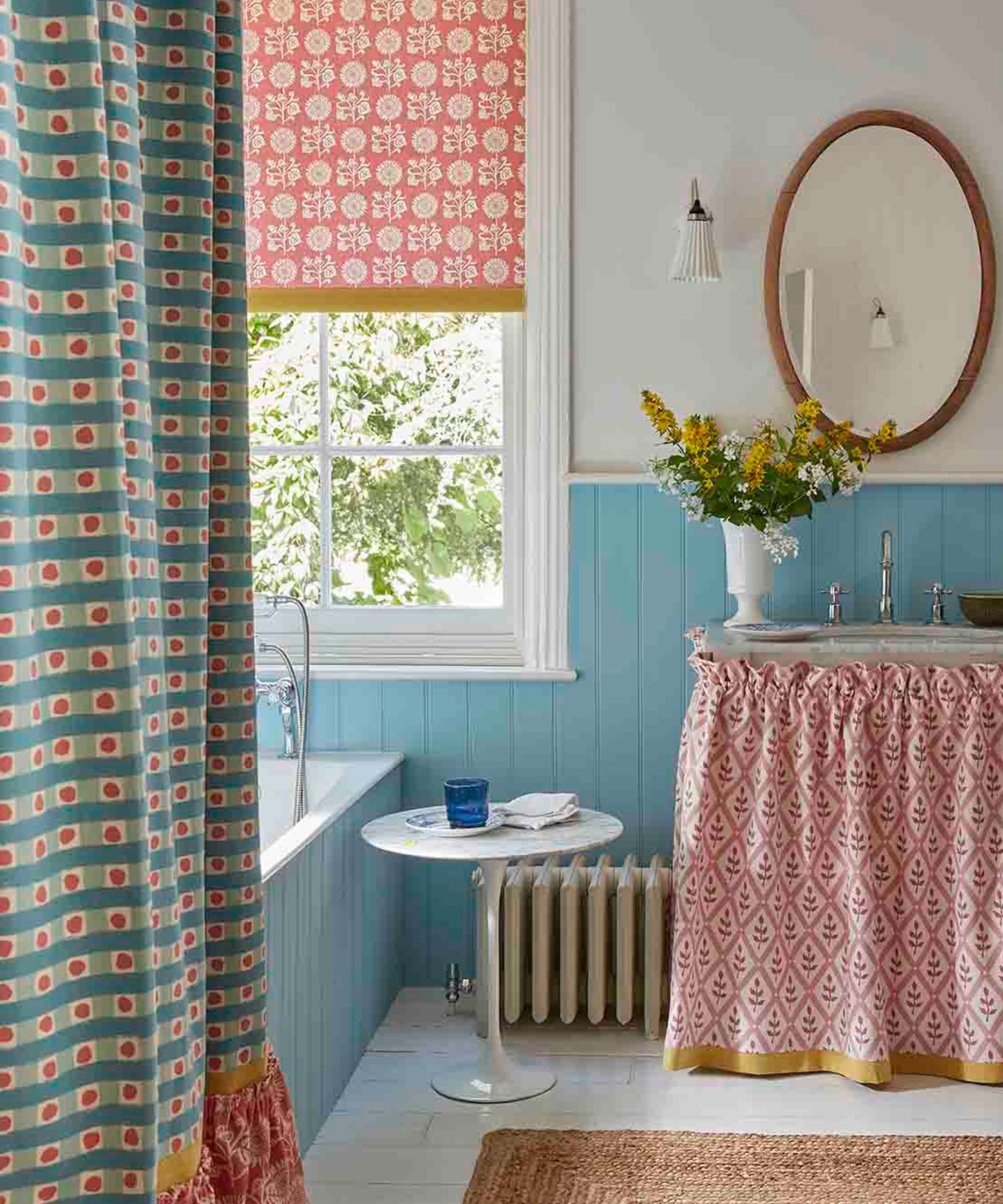
It's not just trims that are bringing nostalgic vibes to interiors, fabric valances and skirts are also edging their way back onto the scene. Whether used under counters, sinks, or around chairs and beds, these soft pleated fabric skirts are popular with interior designers looking to create a vintage look but they're also a wonderful way to bring softness and a homely feel to what can be cold, practical spaces.
'Giving a skirt to a sink or a basin gives so much to a room; adding in softness and pattern to rooms which often have little opportunity for soft furnishings. It is very easy to do and has maximum benefits, including creating a storage space for loo rolls or any paraphernalia needed,' says fabric designer Vanessa Arbuthnott. 'I remember a basin skirt in my bathroom as a kid: My mum made the skirt, gathering up a pretty cotton striped fabric and created the perfect place for hide and seek!' You just need wire cord cable with hooks and eyes. Every basin is a different shape but you should be which make the skirt work.'
5. Introduce vintage and retro furniture
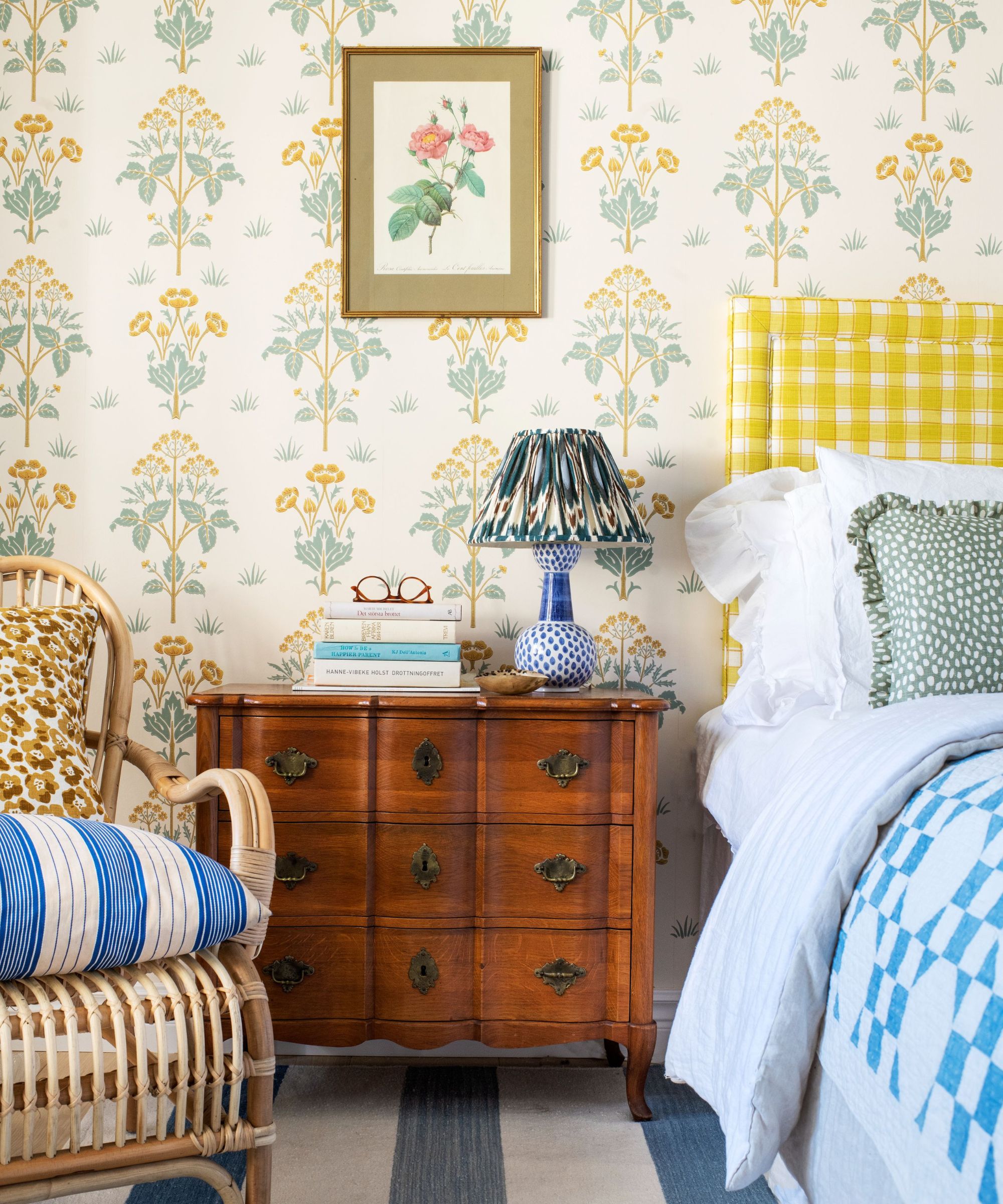
Decorating with vintage and retro furniture can instantly inject soul and character into interiors. Original and authentic pieces are often unmatched in their quality to modern pieces and boast beautiful aged patinas inimitable with factory-made designs. Bespoke designs based on vintage styles can also be a wonderful option.
Recently we’ve seen cane, rattan, and bamboo pieces proving particularly popular with interior designers, from elegant cane bergère-style designs to retro, bent cane chairs and accessories.
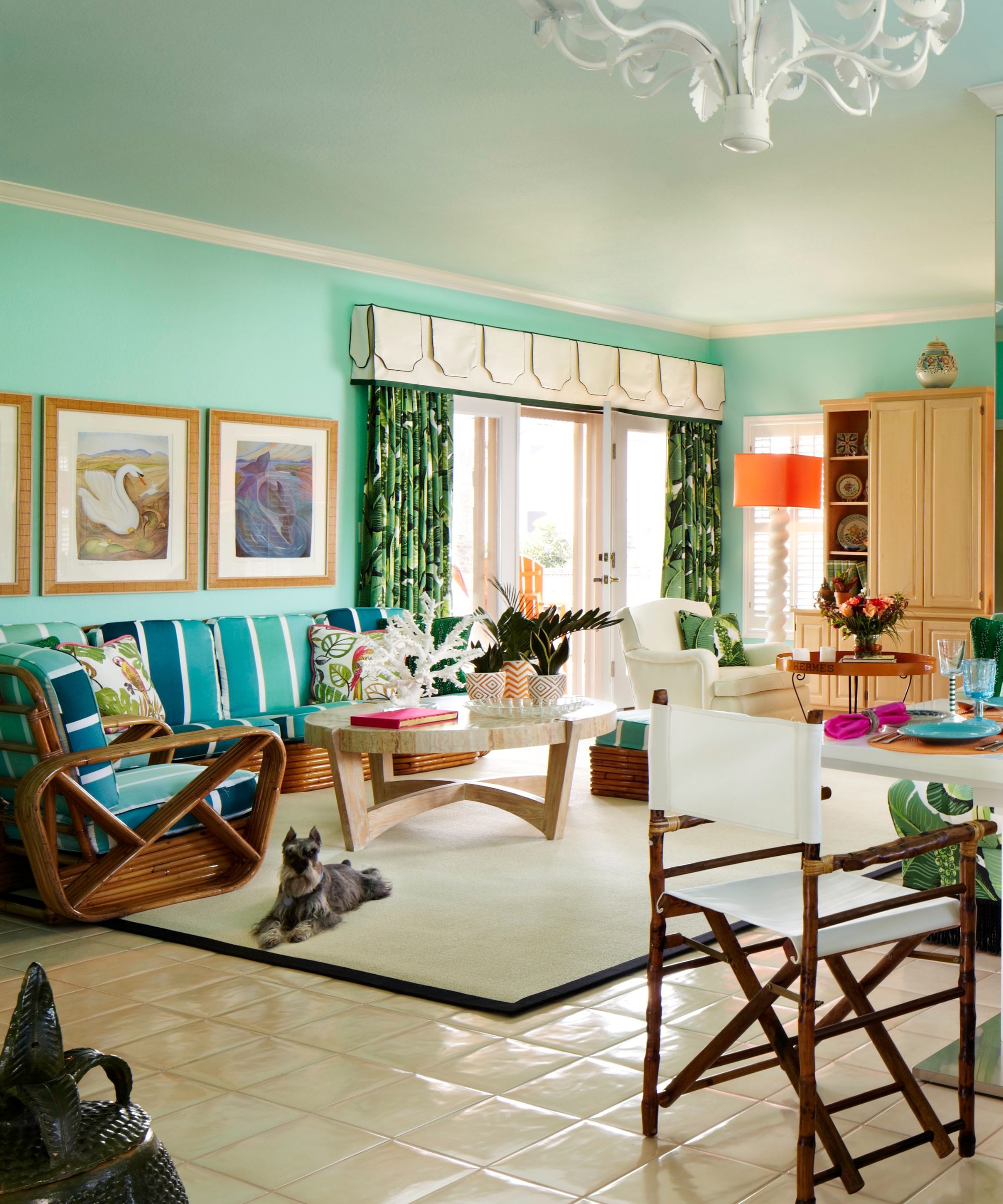
Rudy Saunders, design director at Dorothy Draper & Co., has noticed a rise in people wanting to decorate with cane and bamboo furniture with clients interested in using these pieces in more transitional interiors, mixed in with contemporary furniture.
'The key is to move it beyond tropical. Many people think of it in a vintage tropical setting, think tiki bar – but we can use it to be really elevated. It has an unexpected natural character to it that juxtaposes really well into many different environments,’ says Rudy Saunders. When painted these pieces have a totally different look which helps give it longevity. There generally is a more Mid-century modern leaning towards the style of bamboo and rattan which I think can help to keep it feeling fresh and new.'
6. Decorate with collectables
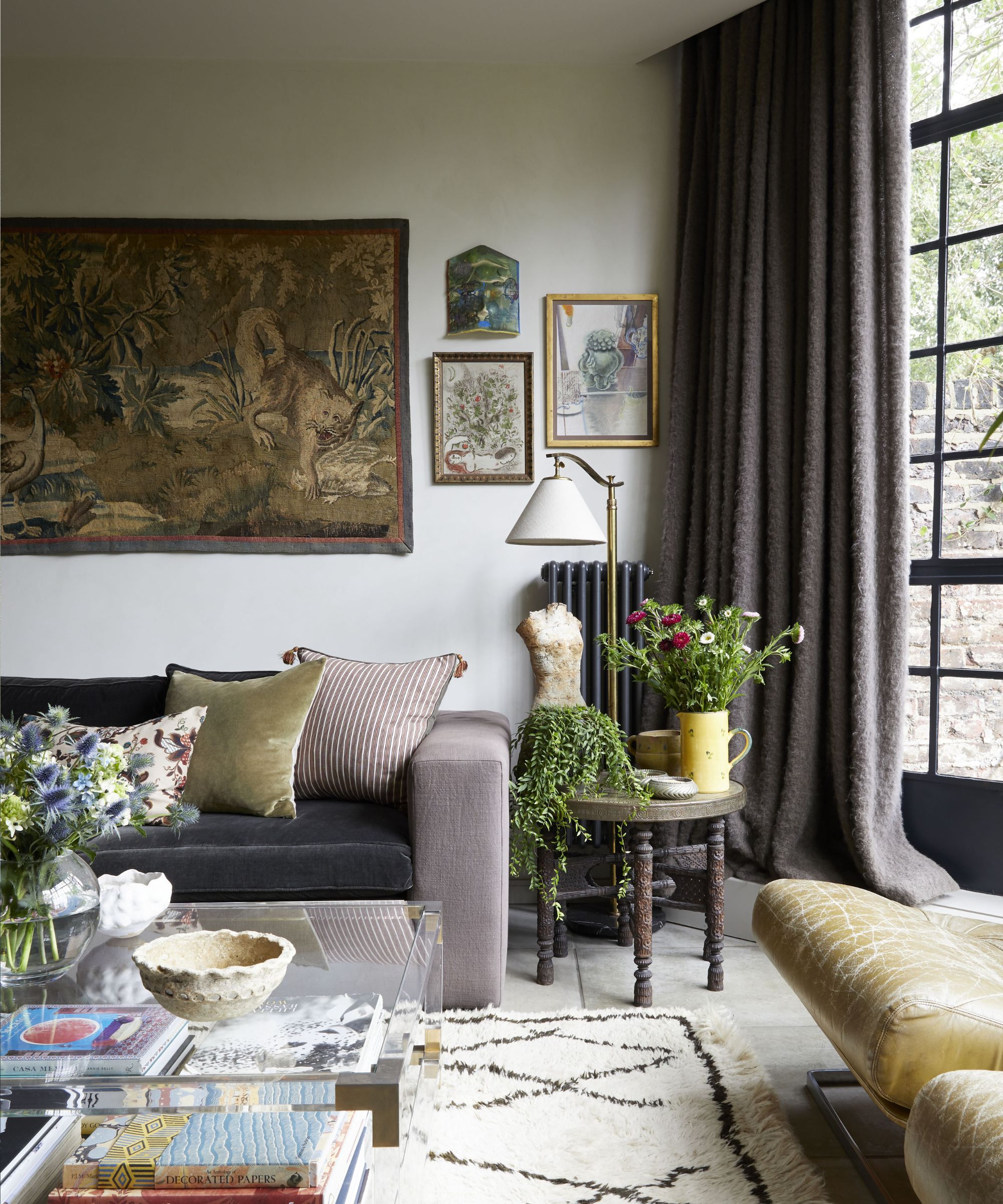
Decorating with cherished possessions, family heirlooms and collectibles that have happy stories to tell is a great way to embrace the idea of nostalgia-core. Surrounding ourselves with these items is guaranteed to spark joy and brings unique personality to interiors.
‘Mixing the old with the new creates interiors that look like they have evolved naturally over the years. This is best achieved by combining new finds with family heirlooms or vintage finds,’ says Georgina Cave, creative director and co-founder at Cave Interiors. ‘The whole point of collecting art or mementos is so they can be appreciated.' When considering how to display collections, ‘not overthinking it is key,’ adds Georgina Cave. ‘However, we do always check anything to be hung on walls as a group do sit well together by laying them out on a flat surface first.’

'I find that antiques have a timeless quality that is difficult to achieve with most modern pieces, and the depth they bring to a scheme provides unparalleled comfort,' says Henriette Von Stockhausen, founder of VSP Interiors.
'Often it is the juxtaposition of old and new that creates that certain special energy.' When it comes to displaying antiques and collectibles, 'almost anything goes and there are no hard and fast rules, other than whether the piece speaks to you and you like it,' adds Henriette Von Stockhausen.
Nostalgia-core might sound like a trend, but as with many styles that look to the past for inspiration, it's timeless as well as current. Approach it transitionally, mixing elements of traditional aesthetics with more modern pieces, colors, and prints and you'll ensure you're designing a home that never dates.

Pippa is a contributor to Homes & Gardens. A graduate of Art History and formerly Style Editor at Period Living, she is passionate about architecture, creating decorating content, interior styling and writing about craft and historic homes. She enjoys searching out beautiful images and the latest trends to share with the Homes & Gardens audience. A keen gardener, when she’s not writing, you’ll find her growing flowers on her yard for styling projects.